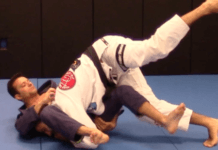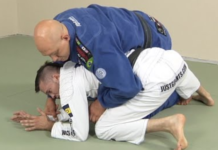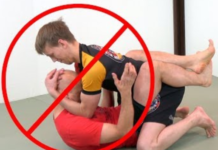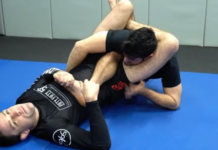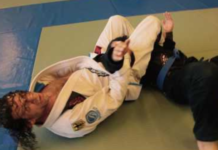BJJ is a system of techniques that will help you control and submit your opponent and, in turn, prevent your opponent from controlling and submitting you. While there are many techniques that have originated from the development of this martial art – BJJ is known for its borrowing of other martial arts’ concepts. One of the martial arts from which BJJ borrows heavily is Judo. And one of the official 29 grappling techniques of Kodokan Judo is Ashi Garami. In the martial art of Judo, this is one of the 4 forbidden techniques due to the risk of injuries. Below you will read some more information about what Ashi Garami is all about and how you can implement it in your BJJ game.
The structure of Ashi Garami
Ashi Garami can be loosely translated to “leg entanglement”. And this is what the technique is all about. If you enter the position in BJJ, then you will have many options to control and submit your opponent with various leg locks. So, there are two basic variations of the Ashi Garami position – inside and outside Ashi Garami.
The inside Ashi Garami means that you will control your opponent’s leg at the ankle by wrapping your arm around it. At the same time, you will use your outside leg to push at his hip (this is legal under IBJJF). Your inside leg needs to be flexed and located between your opponent’s legs, helping with the control. This is the basic inside Ashi Garami position.
The only difference when it comes to the outside Ashi Garami position is that your inside leg will need to go over the “controlled leg” of your opponent and you will need to cross your legs at the side of your opponent’s hip. This is the so-called outside Ashi Garami position. For a bit more in-depth analysis about the inside and outside positions along a few other important positions, check the video below:
Ashi Garami submissions
As we have mentioned in one of the previous paragraphs, Ashi Garami is a great position for executing various leg locks. So, heel hooks and ankle locks should be your bread and butter when it this position.
The leg-attack system in BJJ was overlooked until recently. It took the brilliant mind of John Danaher to develop this system and make it a powerful weapon in the arsenal of BJJ practitioners. If you want to learn how to execute footlocks, toe holds, and heel hooks fro this position – then you should find all the instructional videos that John Danaher has made.
That being said, you can perform powerful heel hooks and ankle locks from the Ashi Garami position. Regardless if it’s inside or outside Ashi Garami – you can wrap your arm under the ankle of your opponent. Grab this arm at the wrist with your free hand perform the ankle lock. Your opponent will have to tap out.
The heel hooks are banned under IBJJF, but that doesn’t mean that they are banned from BJJ. You just have to make sure to perform the heels hooks very carefully as they can indeed be risky. So, from this position, you can slide your arm under your opponent’s heel and then rotate it while you prevent your opponent from escaping with your legs.
And there are many different ways in which you can implement leg attacks from the Ashi Garami position. The power that this position can give you for control and submissions cannot be overstated.
Entry into the Ashi Garami
There are dozens of different entries that you can use for getting into this position. The simplest method involves a sitting BJJ competitor versus a standing one. The sitting competitor needs to wrangle up his leg around his opponent’s leg on the same side and push with his foot at his hip. At the same time, he needs to wrap his hand around the ankle of the same leg of the opponent and pull. If done correctly, the opponent will fall down and the person that did the sweep will be into an Ashi Garami position.
You can also escape from mount control and enter the Ashi Garami position. All you need to do is explode your hips under the opponent, scoot back a bit in order to put your foot at your opponent’s hip and then pull at his ankle.
You can also use a counter to get into the Ashi Garami position. For an example, your opponent can use a hip bump in order to push you from top guard into being mounted. If this happens – you can lose no time. You need to be fast, while your opponent is in the process of mounting you, you need to again quickly scoot back and put your foot at his hip while pulling his ankle. And you have once again entered Ashi Garami. You can see a video for various entries into this position .


